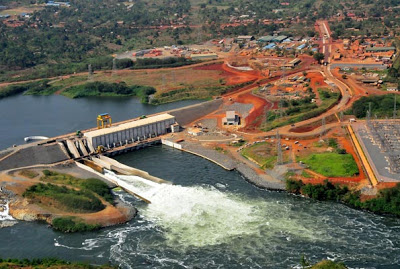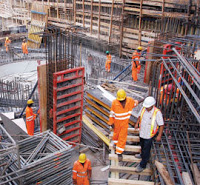 |
AN AERIAL VIEW OF BUJAGALI |
This development is a sigh of relief for Ugandans in several ways: it eliminates expensive thermal power; It releases some US$9.5 million in electricity subsidies to the exchequer; it eliminates load shedding and brightens prospects for economic growth.
For Ugandan President, Yoweri Museveni, who launched the dam, it was a vindication that tenacity pays. He had the last laugh over opposition to the project!
The project Uganda was dogged by controversy, some of it crass. Mooted in 1990s, Bujagali immediately faced all sorts of opposition from donors and their cohorts in the civil society sector-that at a time when the country experienced 12 hour loading shedding due to drought.
Activists and foreign donors argued that the project was not development effective –whatever that meant. Others cited corruption in the government and such crass. Critics argued that the project was not the least cost option for it failed to factor in “costs due to losses in tourism, environmental quality, culture and spirituality as well as socio-economic and socio-political stability.”
They argued that Karuma hydro was cheaper for it was “not environmentally, socially and culturally destructive. Further the Karuma dam’s electricity will be cheaper.”
Eventually, donors, led by the World Bank’s IFC pulled out of the project, effectively killing it. The local civic society gloated celebrating what they thought was the death of Bujjagali. Then in 2006, the Uganda government decided it will finance the project from domestic sources.
Ugandan motorists were to pay an additional UGx100 (then US$0.02) to finance the project. A frustrated President Museveni- in a show of his resolve to build the project- gave thediplomatic community a dressing down from the floor of Parliament. His conclusion: “we shall fund the project from domestic resources and foreigners should keep off.”
A month later, IFC approved the US$320 Million loan thus unlocking funding to the project whose construction began a year later. This raised eyebrows in Kampala and the EastAfrica , Such inconsistency on the financier community put to question their objectivity.
Back to Bujagali. The US$900 million project was built in five -50 MW units by Industrial promotion services, IPS, an infrastructure development arm of the Agha Khan Foundation.
The foundation and its affiliates invested some US$200 million in the project while the rest was sourced from IFC, AfDB, KfW and the Barclays Bank, Uganda media reports say.It
 |
| The Plant During Construction |
Bujagali joins five other mini-hydro stations commissioned in Uganda in the recent past. The five combined supply 41MW to the national grid raising to 290MW the new power generation capacity in Uganda. The availability of an additional 290MW, coupled with the output of the Owen Falls dam raise Uganda electricity generation capacity to more than 500MW. This is expected to spur economic growth in the country.
An analysis by the World Bank experts shows that lack of reliable power supply stifles economic growth in Uganda by 1.5 per cent. This means that with a reliable power supply, the economy could grow by an additional 1.5 per cent. The same report says that lack of electricity affects manufacturing productivity by 40 per cent leading to a 10 per cent loss in industrial output.
All things considered then, the entry of Bujagali could see Uganda’s GDP growth rate hit more than 10 per cent. Given that Uganda’s population growth is 3.3 per cent, GDP per capita could rise to 6.0 per cent. Development is defined as a good life for the individual and a good society. Among the measures of a good life for the individual is the number of people lifted above the poverty line. A positive per capita income is one measure of the effectiveness of development.
Critics have been shamed while the hand of the Uganda government has been strengthened.
http://eaers.blogspot.com/2012/10/bujagali-hydropower-brightens-ugandas.html
